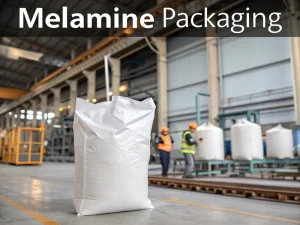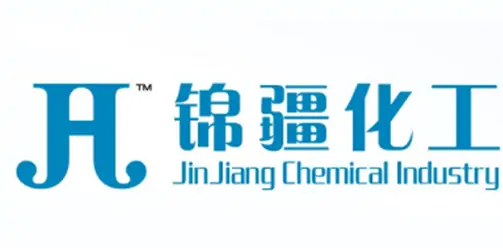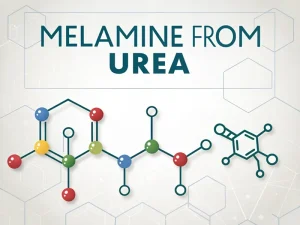
Melamine Packaging
Tech Blog Melamine packaging For manufacturers, inaccurate packaging not only fails to meet national standards but also increases labor costs and the risk of product


The urea freezing point, especially in aqueous solutions, is a key characteristic that has significant impacts on industries ranging from automotive emission control to agriculture in cold regions. Urea (CO (NH ₂) ₂) itself is a solid at room temperature with a melting point of 132-135 ℃, but its aqueous solution – most notably AdBlue (automotive urea) for diesel trucks – has a freezing point that varies depending on concentration, with automotive urea solutions fixed at -11°C due to standardized design.
Pure urea: As a solid, urea melts at 133 ° C without the traditional liquid-solid “freezing point,” decomposing above the melting point rather than solidifying.
Urea solution: The freezing point of interest usually refers to a water urea mixture, in which urea acts as a solute to lower the freezing point of water (a phenomenon called freezing point depression).
The freezing point of urea solution depends on the mass molar concentration (m) of the solute, which is described by the following formula: ΔTf=Kf×m
“ΔTf” is the freezing point depression (°C)
”Kf” is the cryoscopic constant for water (1.86 °C·kg/mol)
“m” is the molality of the urea solution (moles of urea per kg of water)
For example, a 1-mole urea solution freezes at approximately -1.86 ° C, while the freezing temperature of pure water is 0 ° C.
Urea concentration (%) | Urea Freezing point (° C) | Phase transition characteristics |
0 (pure water) | 0 | ice crystal nucleation |
10 | -3.5 | ice+urea solution eutectic |
32.5 (DEF standard) | -11.0 | minimum eutectic point |
40 | -17.8 | urea hydrate crystallization |
>50 | <-20 | glass transition |
Note: The data may vary slightly with impurities and pressure.
Scientific mechanism:
Urea freezing point (-11°C): 32.5% urea solution reaches the optimal molecular ratio (1 urea: 7.5 water), forming a stable hydrogen bond network and inhibiting ice crystal growth.
Undercooling phenomenon: High purity DEF solution can be briefly supercooled to -15°C without freezing (with a nucleation energy barrier of 25 kJ/mol).
Concentration: The higher the urea concentration, the lower the freezing point, but solubility limitations apply (e.g., approximately 108 g/100 mL at 20°C).
Ions and metals: Trace impurities such as iron and chloride can alter the freezing point, leading to corrosion of the SCR system.
Biuret: Biuret reduces the effective concentration and increases the freezing point in urea.
Temperature: Undercooling may occur in pure urea solution, where the liquid remains unfrozen below its nominal freezing point until nucleation triggers solidification.
1. Freezing phenomenon: When the ambient temperature is below -11°C, the urea solution will freeze, which may cause blockage of the injection system.
2. Vehicle solution:
Modern National VI models are generally equipped with a urea tank heating function, which defrosts through engine coolant circulation.
The urea pump will automatically stop working when the temperature drops below 7°C to prevent crystal damage to the system.
3. Precautions for use:
Avoid adding antifreeze to dilute the solution; otherwise, it will affect the exhaust treatment effect.
When adding urea in winter, it is not advisable to fill it up and leave room for expansion.
Urea fertilizer solution: Liquid urea fertilizer (such as UAN solution) must maintain fluidity during winter. By lowering the freezing point with urea, appropriate formulations can be used at temperatures as low as -20 ° C.
Soil freezing effect: Urea applied to frozen soil may remain unresponsive before thawing, as the hydrolysis of urease is inhibited at low temperatures.
From achieving clean diesel transportation in the Arctic region to promoting winter fertilization, understanding and manipulating the freezing behavior of urea has driven innovation in environmental technology and agriculture.
With the tightening of global emission standards and the expansion of industries in cold regions, precise control of the urea freezing point solution remains crucial for efficiency and sustainability.

Tech Blog Melamine packaging For manufacturers, inaccurate packaging not only fails to meet national standards but also increases labor costs and the risk of product

Tech Blog How to Detect Melamine in Textiles? Melamine powder, a nitrogen-containing heterocyclic compound, is widely used in flame-retardant textiles and plastic products due to

Tech Blog melamine from urea Melamine is well-known for its wide range of applications, but its raw material for production is surprisingly urea. For manufacturers,

JINGJIANG MELAMINE POWDER
© JINJIANG MELAMINE